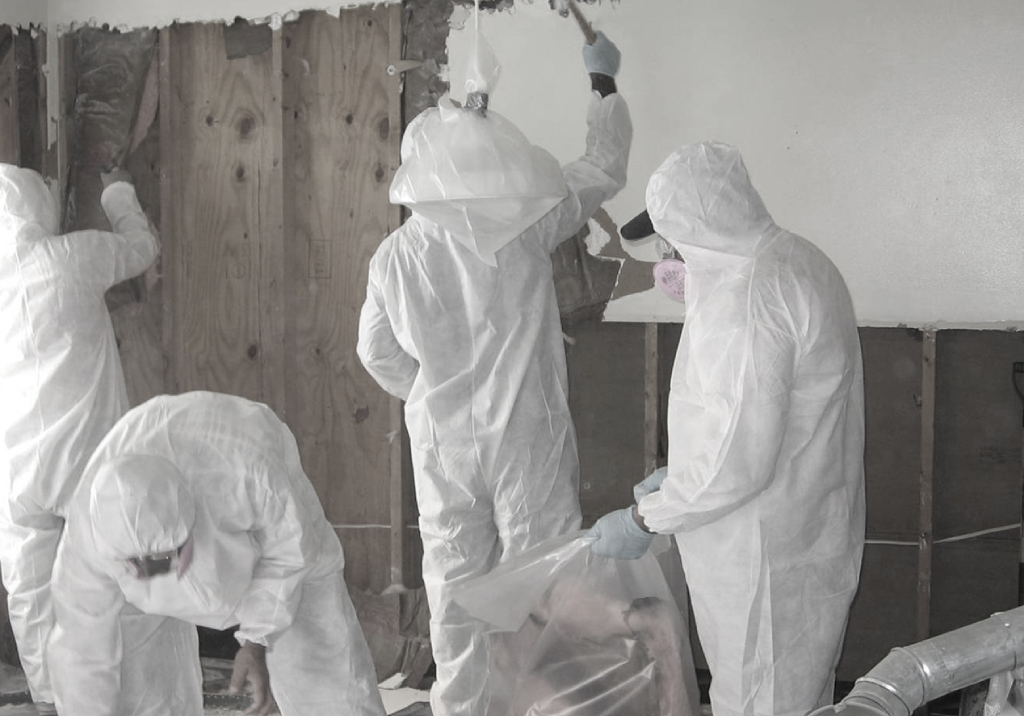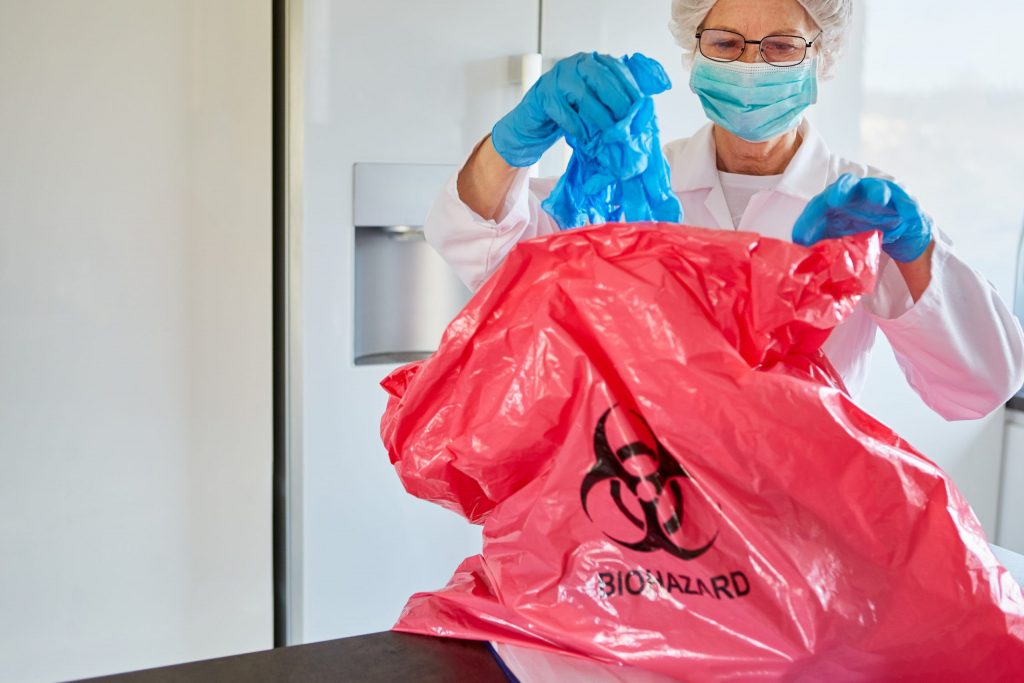Flood Damage Restoration: Quick and Efficient Recuperation for Your Home
Flood Damage Restoration: Quick and Efficient Recuperation for Your Home
Blog Article
Specialist Biohazard Cleaning and Purification for Blood, Bodily Fluids, and Hazardous Materials
In the world of biohazard cleansing and decontamination for blood, bodily fluids, and dangerous products, precision and expertise are paramount. The possible health and wellness risks linked with exposure to biohazards underscore the critical need for precise handling and detailed clean-up. Specialized training equips professionals with the expertise and abilities essential to attend to these dangerous scenarios properly. However, it is not merely about cleaning up; the relevance of employing proper decontamination methods can not be overstated. As we navigate the complex landscape of biohazard cleaning, understanding the nuances of laws, compliance, and the specialized tools at play ends up being critical in making sure a detailed and safe decontamination procedure.
Wellness Dangers of Biohazard Exposure
Exposure to biohazards positions substantial health and wellness dangers that can lead to extreme repercussions for communities and individuals alike. Biohazards include a variety of biological compounds, including blood, bodily fluids, mold, bacteria, infections, and other possibly infectious materials. When people come into call with these biohazards, whether with accidents, improper handling, or ecological direct exposure, they face the threat of having serious diseases or conditions.
One of the key wellness risks connected with biohazard direct exposure is the transmission of transmittable diseases. Bloodborne virus such as HIV, hepatitis B and C, and various bacteria can be existing in biohazardous materials, presenting a straight threat to human health and wellness. Breathing in air-borne biohazards like mold and mildew spores or entering into contact with polluted surfaces can additionally lead to breathing problems, allergies, and various other unfavorable health and wellness results.
Furthermore, biohazard direct exposure can have long-lasting health and wellness implications, with some conditions showing up years after the preliminary call (Blood Cleanup). For that reason, it is essential to focus on appropriate biohazard cleaning and purification to minimize these wellness risks and make certain the safety of individuals and communities

Specialized Training for Biohazard Cleanup
When it involves handling biohazard cleanup efficiently and safely, specialized training plays a basic role in ensuring correct purification treatments are complied with. Biohazard clean-up needs specific understanding and abilities to efficiently mitigate risks connected with bloodborne microorganisms, bodily fluids, and dangerous products. Professionals trained in biohazard cleaning undertake extensive instruction on just how to safely manage, get rid of, and throw away biohazardous materials to avoid contamination and direct exposure.
Specialized training for biohazard clean-up covers a variety of essential topics, consisting of appropriate individual safety equipment (PPE) use, bloodborne microorganism awareness, decontamination strategies, and contaminated materials disposal methods. Individuals learnt biohazard cleaning are geared up with the needed expertise to analyze contamination degrees, determine possible threats, and implement suitable cleanup procedures in compliance with governing requirements.
Continual training and education are extremely important in the area of biohazard cleanup to remain updated on the most recent decontamination innovations, safety methods, and guidelines. By purchasing specialized training, biohazard cleanup specialists can properly react to emergency cleanup situations and safeguard both public health and the environment.
Relevance of Correct Decontamination Strategies
Using proper purification techniques is vital in biohazard clean-up to successfully minimize and get rid of unsafe materials health and wellness threats. Reliable decontamination not just ensures the removal of noticeable traces of blood, physical liquids, and various other biohazards yet also targets unseen microorganisms that might present severe wellness hazards if not properly gotten rid of. By adhering to strict decontamination procedures, trained professionals can significantly decrease the threat of direct exposure to hazardous bacteria, infections, and microorganisms that click here for more info might cause conditions or infections.
Appropriate decontamination methods entail using specific devices and disinfectants that are particularly made to neutralize biohazards properly. Extensive cleansing and sanitation of infected areas are important to prevent the spread of pathogens and make sure a secure atmosphere for passengers. In addition, the correct disposal of biohazardous waste following purification treatments is vital in preventing contamination of other surfaces or people.

Devices and Tools for Safe Cleanup
When dealing with blood, physical liquids, or unsafe products, biohazard cleansing professionals depend on specialized gear to decrease exposure threats and thoroughly decontaminate the affected area. In addition, biohazard cleaning packages containing disinfectants, absorbent products, and biohazard bags are utilized to securely have and get rid of of polluted things.
Advanced cleaning devices like hospital-grade anti-bacterials, HEPA-filtered vacuums, and misting devices are used to sterilize surface areas and get rid of biohazards properly. Specialized equipment such as sharps containers and biohazard garbage disposal bins are made use of to securely manage sharp things and biohazardous waste products. By utilizing the best visit this site tools and tools, biohazard cleansing specialists can guarantee an extensive cleanup procedure that focuses on safety and security and minimizes health threats for both employees and passengers of the affected room.
Laws and Compliance in Biohazard Cleansing
Appropriate adherence to guidelines and conformity criteria is vital in biohazard cleaning to guarantee the safety of both personnel and the environment. Government agencies such as OSHA (Occupational Security and Wellness Management) and the EPA (Epa) have established particular guidelines for biohazard clean-up treatments to decrease wellness dangers and environmental contamination. These regulations cover a variety of facets including the handling, transportation, and disposal of biohazardous products, as well as the necessary training and safety devices required for workers involved in the clean-up process.
Biohazard cleansing companies should remain current with these policies to assure that their operations fulfill the needed security standards. Failure to abide by these guidelines can lead to severe effects, including fines, legal activity, and endangering the health and wellness of individuals and the atmosphere. By adhering to strict regulations and conformity procedures, biohazard cleaning business can successfully reduce risks and ensure a risk-free and detailed cleaning procedure for all events entailed.
Conclusion
To conclude, biohazard cleansing and decontamination need customized training, appropriate methods, and adherence to policies. Exposure to blood, bodily liquids, and unsafe products poses considerable wellness threats, making it vital to make use of the best equipment and devices for risk-free clean-up. By complying with rigorous methods and guidelines, specialists can successfully reduce the dangers connected with biohazard exposure and make certain the safety of both themselves and others.
As we navigate the elaborate landscape of biohazard cleaning, recognizing the nuances of guidelines, compliance, and the customized devices at play becomes vital in guaranteeing a secure and comprehensive purification procedure. (Blood Cleanup)
When it comes to taking care of biohazard clean-up effectively and safely, specialized training plays a fundamental duty in guaranteeing appropriate decontamination procedures are complied with.Making use of correct decontamination methods is essential in biohazard cleaning to successfully get rid of dangerous materials crime scene cleanup business income and reduce health and wellness risks. In addition, biohazard cleansing kits including anti-bacterials, absorbent products, and biohazard bags are used to securely dispose and include of polluted things.
Government firms such as OSHA (Occupational Safety and Health And Wellness Administration) and the EPA (Environmental Protection Agency) have developed particular standards for biohazard clean-up procedures to reduce wellness threats and ecological contamination.
Report this page